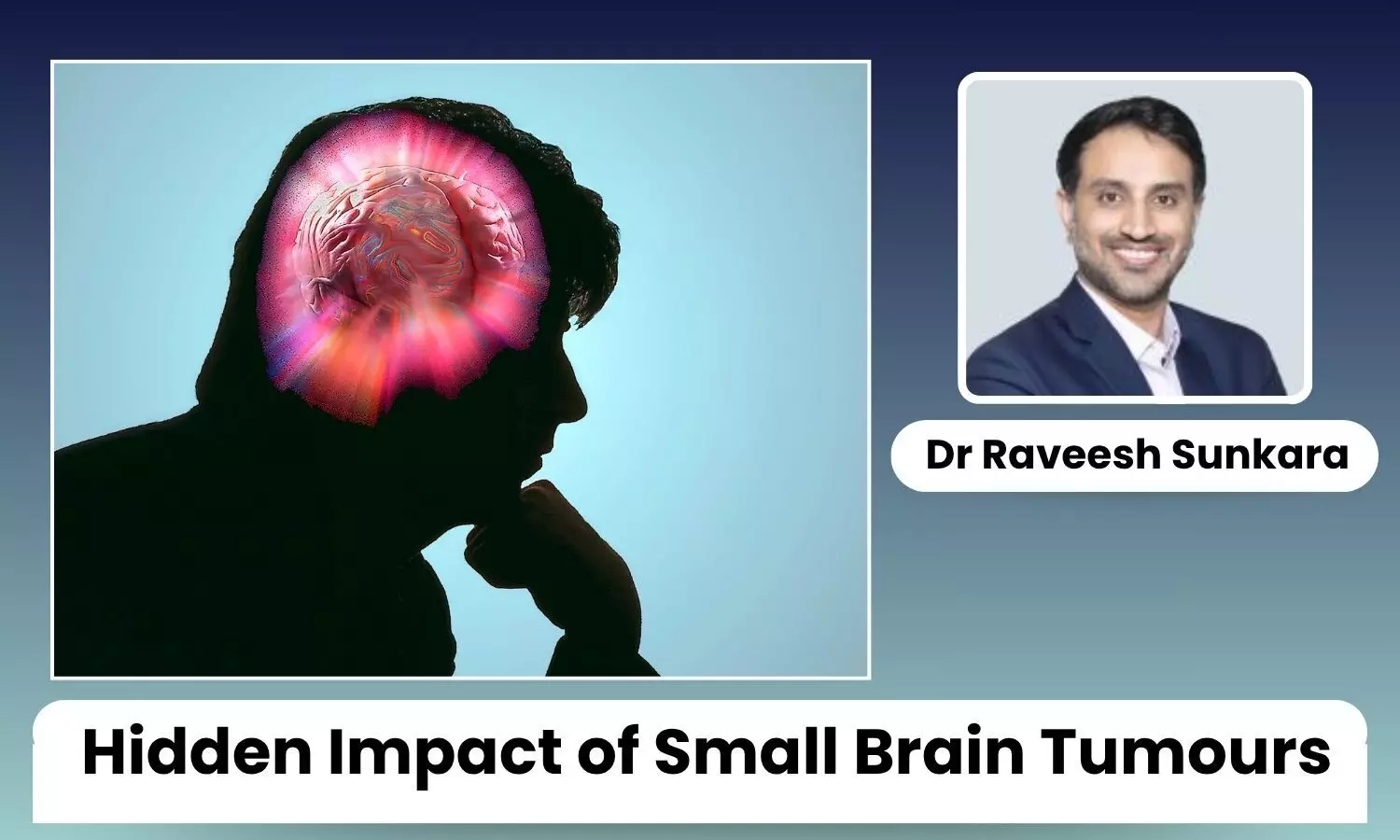Small Lesions, Big Impact: Why Tiny Brain Tumours Can Cause Major Symptoms: Dr Raveesh Sunkara

When people hear the word "brain tumour," they often imagine something large and fast-growing, something that visibly pushes against the brain and causes seizures or loss of consciousness. But in neurosurgery, some of the most disruptive tumours are not the largest.
It’s often the smallest ones, those tucked into vital, high-function areas that create the biggest problems.
These are tumours located in what are known as “eloquent areas” of the brain. Here, even a few millimetres of growth can interrupt essential functions like speech, movement, balance, or memory. Unlike other parts of the brain, where minor damage may go unnoticed, these regions don’t allow much room for error.
What Are Eloquent Areas?
The brain is divided into zones, each responsible for different functions. While all areas serve a purpose, some are more critical than others. The motor cortex controls movement. The brainstem manages heart rate, breathing, and alertness.
The visual cortex allows interpretation of visual input. Areas like Broca’s and Wernicke’s govern speech production and comprehension.
Tumours affecting these regions are said to lie within “eloquent” zones. The term doesn’t mean these areas speak in words, but that they are highly expressive in terms of function. A lesion just a centimetre wide in the motor strip can lead to visible weakness in a limb.
A similarly small mass near the brainstem may disrupt swallowing, balance, or even consciousness.
Why Size Doesn’t Equal Severity
It’s a common misconception that the bigger the tumour, the worse the symptoms. While size does matter in terms of mass effect and pressure, the location is often the more important variable.
A large tumour in a non-eloquent region might be asymptomatic for years. On the other hand, a tiny tumour near the optic nerve can cause sudden vision loss.
One example frequently encountered is a vestibular schwannoma a small benign tumour near the inner ear and brainstem. It may initially present with subtle signs like imbalance or ringing in the ear, but if undiagnosed, it can grow to affect hearing, facial movement, or coordination.
Symptoms That Don’t Seem to Match the Scan
One of the unique challenges in neurosurgery is when a patient presents with significant disability, yet the scan shows only a small lesion. This mismatch can be confusing for patients and even some non-specialists.
But understanding the brain’s functional map explains it. Where a tumour sits is often more telling than how large it is.
For instance, a small glioma in the frontal lobe’s motor strip may lead to foot drop or hand weakness. A similar lesion in the temporal lobe might instead affect memory or speech fluency.
These are not general symptoms; they are precise and localised, driven by the lesion’s proximity to highly specialised brain circuits.
The Delicate Art of Surgery in Eloquent Zones
Operating in eloquent areas requires an entirely different level of planning. Surgeons must preserve not just life, but the quality of that life, mobility, speech, and independence. In such cases, even removing a benign tumour can be risky.
Advanced tools like functional MRI, intraoperative brain mapping, and awake craniotomy enable navigation through these high-risk zones with greater accuracy. During certain surgeries, patients are kept awake to help identify critical functions in real-time.
A wrong move, even a few millimetres, could mean the difference between walking and paralysis.
Not All Tumours Are Cancerous, But All Need Attention
It’s important to understand that “tumour” doesn’t always mean cancer. Many small brain tumours are benign, but that doesn’t make them harmless. Their presence in a key area can still alter day-to-day life, from basic motor skills to the ability to speak or think clearly.
That’s why early diagnosis and precise monitoring are vital.
Knowing When to Seek Help
Unexplained headaches, sudden weakness, vision changes, imbalance, or difficulty with speech shouldn’t be ignored. While these symptoms may have many causes, in some cases, they are the first signs of a small tumour in a critical location.
The sooner it’s investigated, the better the outcome both in terms of survival and preserving neurological function.
In brain surgery, impact is not measured by size alone. A lesion no bigger than a grape can leave a person unable to speak or walk if it’s located in an eloquent zone. That’s the paradox of the brain: Small Lesions, Big Consequences: Why Tiny Brain Tumours Can Cause Disproportionate Symptoms it’s not how much is affected, but where.
Such cases demand meticulous planning, balancing the need for removal with the preservation of function. Because when it comes to the brain, even the smallest shifts can shape a life.
Disclaimer: The views expressed in this article are of the author and not of Health Dialogues. The Editorial/Content team of Health Dialogues has not contributed to the writing/editing/packaging of this article.


